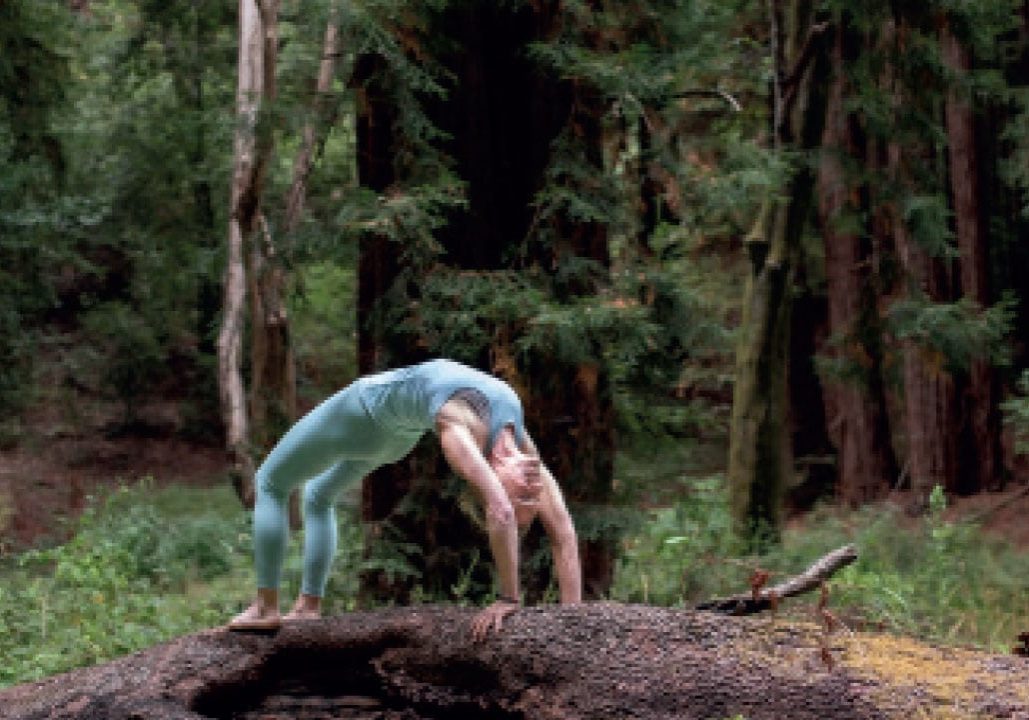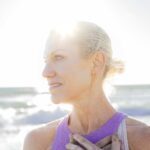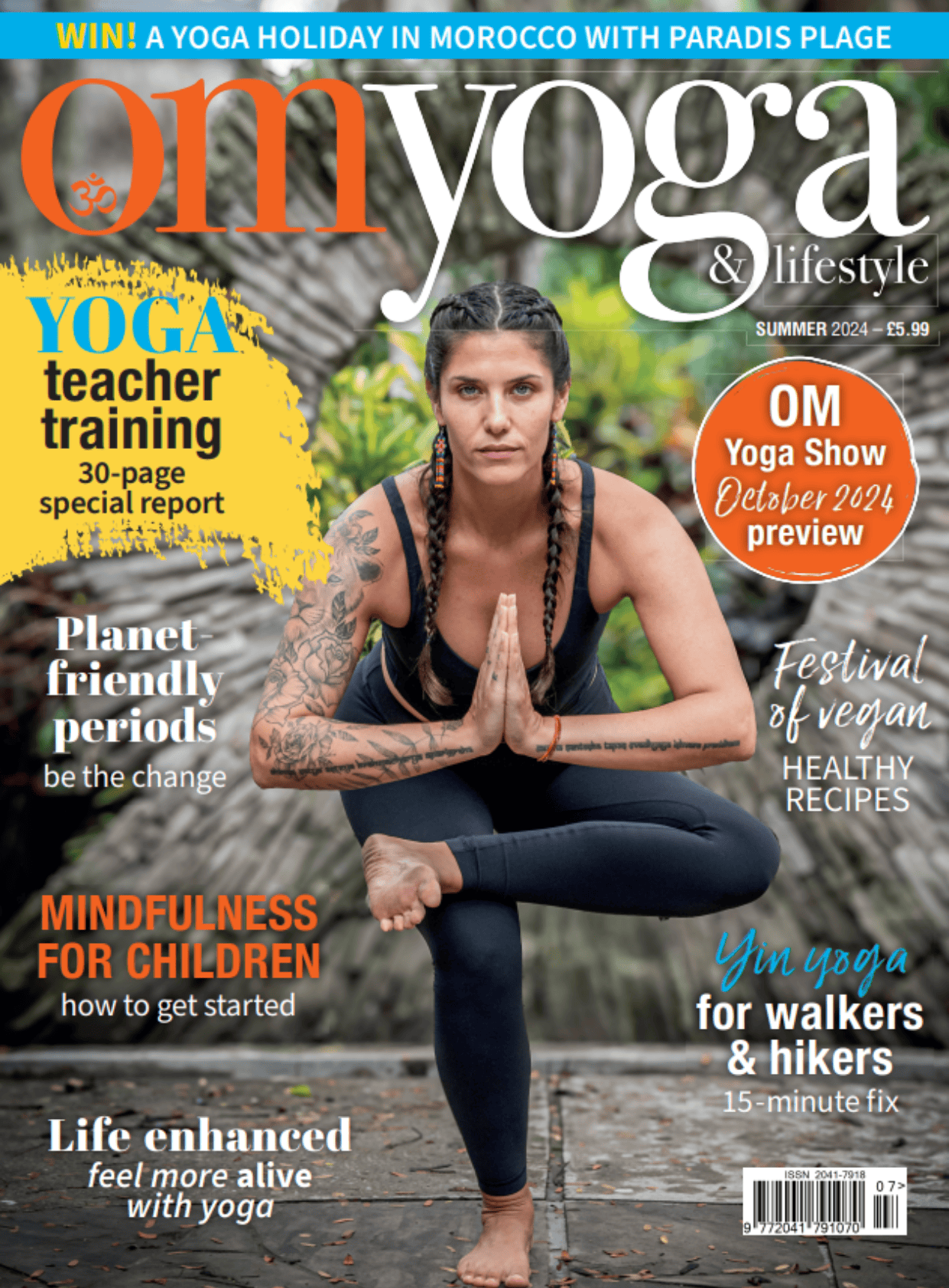
How to become Bendy
Learning something new is an exploration, a reminder that in life, as in yoga, the prize is
in the reach, the learning and the taking part, as we extend ourselves and expand
our awareness. Becoming bendy is about consciousness, not contortionism.
By Andrea Marcum
Reading time: 4 minutes
When I took my first boxing class, I was a disaster. I couldn’t remember the last time I’d set out to conquer something so completely unfamiliar. How was it that things that looked pretty straightforward when someone else was doing them were so hard for me to grasp? I felt like I needed to learn how to learn.
Adele Diamond is a neuroscientist and specialist on learning. She says that we learn best by doing. “The more of you that gets involved — the body, the emotions, everything — the more you get out of it in many ways.” We glean more from being dedicated to something challenging over a period of time than we do only participating in those things for which we exhibit insta-aptitude (i.e. something we find easy). Plus, physical activity is beneficial to brain function (another reason to do our asana). And, perhaps most important of all, we have to want to learn something new.
We get attached to what we think we already know — the ‘right’ way to do a yoga pose, ‘our spot’ in the yoga room — that we become unwilling to bend, even just a little. Stuck in this insipid, unoriginal loop we become even more inflexible and find ourselves susceptible to the trappings of comparison and competition. To become truly limber we need to shift our perspective from contest or performance to laboratory experiment. When we ‘lose the competition’ we’re no longer burdened by ‘success’ or ‘failure’, we’re just observing and learning.
I call this becoming bendy.
As we become bendy we start to understand that ‘mistakes’ are an inevitable part of learning. It’s what we make of our mistakes that are key. Miles Davis said: “Do not fear mistakes. There are none.” And some of history’s most innovative and brilliant inventions and advancements were initially deemed mistakes by the conventional wisdom of the time. Missteps often lead to far more interesting terrain. To become bendy is to hang out in the ambiguity of a question long enough to enjoy the ongoing rewards of unfinished business — to be pliable enough to appreciate that being a disaster in the boxing ring, or anywhere else, is actually part of insightful discovery and growth.
Our progress is uniquely our own, not a contest with someone else. When we lose the competition mistakes become an exciting part of what we’re learning instead of a reason to feel defeated. Our boxing stance and our yoga poses are simply metaphors for how we step out into our lives — and there’s more out there to learn than we even know. Learning isn’t about chasing achievement. It’s about bending our inner control freak in new and inspiring directions.
From yoga philosophy, sankalpa is setting an intention with the understanding that we are perfect and whole already, even as we work towards something better. San (connection with Source, highest Self, truth) – kalpa (resolve, vow) provides an encouraging declarative platform to stand on as we bend and learn. Don’t get me wrong, it’s not a gossamer excuse not to try. It’s the understanding that no one is a louder, more disruptive critic to our learning process than we are — until we aren’t anymore.
As sankalpa suggests, we have to meet ourselves where we are in order to move forward. On our mat, yoga allows us to learn using a synthesis of body, mind and spirit. We acquire skills through experience and expand on them as we draw them back up and work on them again and again. When we’ve previously been exposed to stimulus, even if we are not consciously aware of it, we are faster to recognise it the second time around. As we learn, we’re essentially creating new memories — replacing some old notions and building upon others.
Over the years there have been people who’ve come into my classroom with the most amazing ability. They glide like swans through their standing poses and float as if levitating in mayurasana (peacock pose). Certainly, there’s an elegance that cannot be denied and an ease that it is hard not to lust after and compare ourselves to. They have a sheen that makes us think that life must be so much better over there than it is over here. Over here, where we reach out with our strap as if casting a fishing net, trying to wrap it around our foot and pleading with our hamstrings to let us in.
Yes, aptitude is alluring, as is a colourful sunset, but the strength of the human spirit is what really steals the show. As much as we may enjoy doing them, we don’t learn much from things that come easily. I love watching the most unassuming practitioners create grace out of pretty unlikely ingredients. It is less about what we may or may not have been given, and more what we make of what we’ve got.
Try this:
Lie down on your back with one hand on your heart and one hand on your belly.
Consider this: setu bandha sarvangasana. Some of you will know immediately from the Sanskrit name, which pose to go to, and how to arrive at it. Some of you will need for it to be translated as ‘bridge pose’ before memory serves, and you still might be unclear about how to get into it.
Those with little or no experience of what’s been requested will have to look at it, and be guided into the pose with much detail, as you begin to learn and process it. If no bridge to past experience has yet been built (I couldn’t help myself!), there’s simply not enough memory and experience to draw from. The more you practice, the more you’ll remember, and you’ll pull the information up sooner and faster. You’ll also begin to group the information instead of it being separate bits as you build your bridge.
Lying on your back, place your feet hip-distance apart on your mat with your knees pointing to the sky. Clasp the side edges of your mat and encourage your shoulder blades to snuggle underneath you. Begin to lift your hips skyward with your tailbone magnetised towards your knees, creating the spacious length of tadasana in your torso instead of a compressed or compromised feeling in your lower back or neck.
Try to keep your knees hip distance and pointing upward instead of flopping out to the sides like a set of ears. Energetically, your shins feel like they are pulling towards your head and inspiring your chest to rise. Allow your chest to shift gently towards your chin but refrain from smooshing your chin into your chest. Imagine a little egg under your chin that you don’t want to crack but you also don’t want to lose.
Let it be the back of your head that’s on your mat, careful not to turn side to side while you’re here. Eventually this pose becomes one remembered chunk, and you’re able to add further refinement as you draw it back up; it may or may not turn into other variations.
It’s not just the pose you’re learning about. It’s you. Can you observe where you feel strong, impatient, weak, tight, flexible, or confident in the posture without comparing yourself to someone else, yourself 10 years ago, or what you think is fancier and more advanced? Are you able to remain in the inquiry and learn something new? Can you trade in the need to be ‘right’ or ‘perfect’ for the opportunity to garner something insightful and furthering? Are you willing to “live the questions now” as poet Rainer Maria Rilke put it?
Becoming bendy is consciousness, not contortionism. This setu bandha sarvangasana is a bridge for us to stretch into our questions. How we do one thing is how we do everything. Every pose is an opportunity to meet ourselves where we are and learn more. In our lives, things won’t always come easily, which is exactly where we’ll collect the most wisdom, witness the most benefit and enjoy the rewards of earned understanding.
I didn’t go to boxing class to become a prize fighter: I went because learning something new, no matter what that is, is a fantastically humbling reminder that in life, as in yoga, the prize is in the reach.
Andrea Marcum leads retreats around the world and is the author of Close to OM: Stretching Yoga From Your Mat to Your Life. Practice with her at: andreamarcum.com


